Name: Ammaar Akhtar
Date: 8-30-24
Class: DTC 208
One of my favorite scenes from any movie or show is from the final episode of The Mandalorian season 2. Among the many great parts of this episode, is a scene where the protagonist, the Mandalorian, has boarded the antagonists’s ship to rescue a captured individual. It is here he meets the antagonist himself, Moff Gideon, who is holding the captured individual in the brig. When they meet, they both begin to conversate, the antagonist calmly and methodically explains why he has done what he has in a clear attempt to gain any from of sympathy from the Mandalorian. In this process, the shots continue to zoom in further and further each time they switch between the faces of the antagonist and the protagonist. The music also changes from the fast-paced track that was playing as the protagonist was searching the ship to a more relaxing and simple sound as the conversation goes further. By the end of the conversation, the antagonist promises the protagonist that he can take back the captured individual so long as they both leave and never come back. The shots at this point are almost all medium close-up shots and the music has nearly completely faded out. The protagonist cautiously agrees, and as he walks to un-cuff the captured individual. As he does this, the antagonist withdraws a sword and begins attacking the protagonist. The music immediately picks up and returns to being fast-paced and at its original volume, along with this, the shots change to being medium close-ups, to being long and even extreme long shots as the fight begins. As they continue to duel, the scenes seem to alternate more and more from different ends of the focal range between shots. As in, one second there is an extreme long shot, the next it is a medium close-up. This rapid changing of shot types, I believe, helps emphasize the fight more so than if they were all the same shot type. One thing to note is that as soon as the trap is sprung by the antagonist and the fight begins, a lot of the camera scenes not only alternate in focal lengths rapidly, but also incorporate some level of movement; at times even quite complicated movements. In between shots 11 and 12, the camera does this sweeping motion going from a near close-up to a long shot as they fight pauses long enough for the Mandalorian to grab his metal spear. Other parts of the scene also make use of movement in the shots, such as shot 14 where the character’s sword and spear have locked against one another while being pressed against the wall. As this happens, they both begin to move horizontally along the wall since there is nowhere else to move, leaving fiery tears in the ship’s hallway as they move.
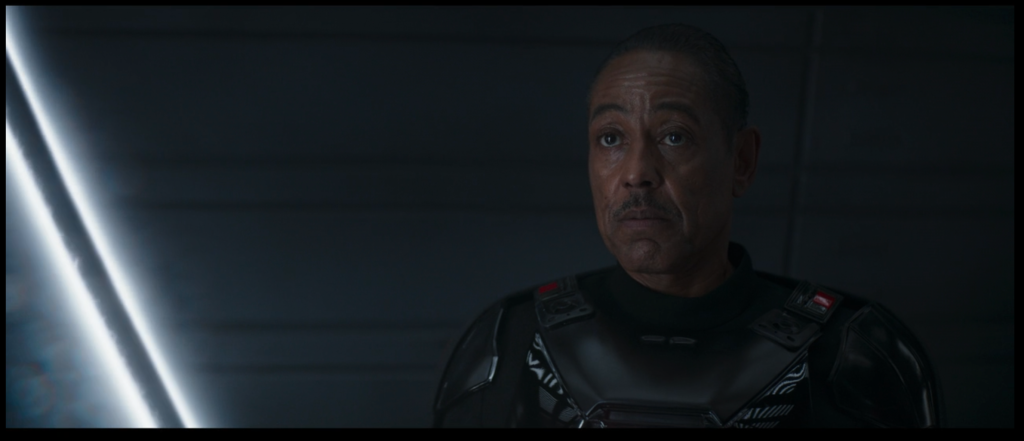
1. Medium Close-Up
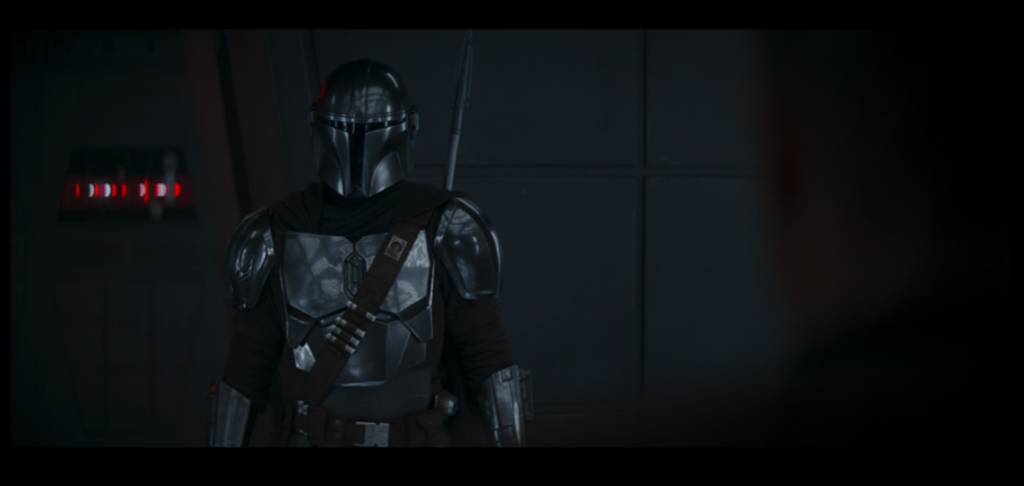
2. Medium

3. Medium Long Shot

4. Medium
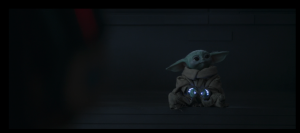
5. Long Shot
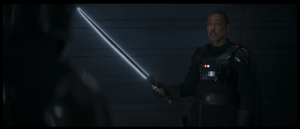
6. Medium Long Shot

7. Medium Close-Up

8. Medium Close-Up
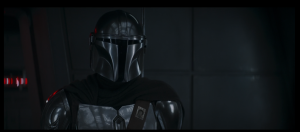
9. Medium Close-Up
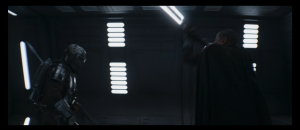
10. Medium Long Shot

11. Extreme Long Shot
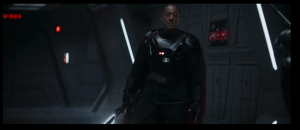
12. Long Shot
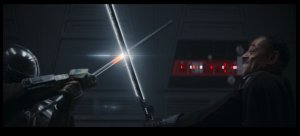
13. Medium Close-Up

14. Medium Close-Up
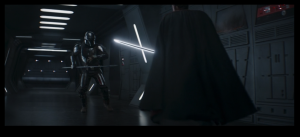
15. Extreme Long Shot
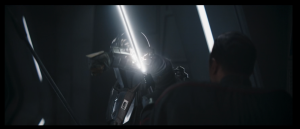
16. Medium Close-Up
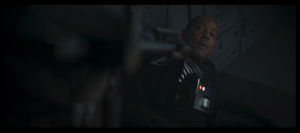
17. Medium